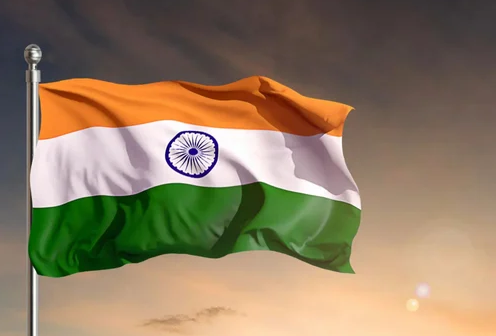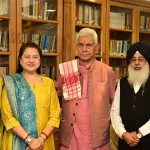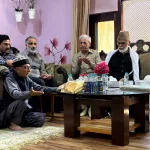The Indian flag, often referred to as the Tricolor or “Tiranga,” is a symbol of India’s unity, integrity, and sovereignty. The journey of the Indian flag is a story of India’s struggle for independence, the nation’s aspirations, and the values it holds dear. This essay traces the evolution of the Indian flag from its inception to its present form, highlighting the key milestones in its journey.
The First Indian Flag: 1906
The journey of the Indian flag began in the early 20th century. The first national flag of India is believed to have been hoisted on August 7, 1906, in Parsi Bagan Square (Green Park) in Calcutta (now Kolkata). This flag, often referred to as the “1906 Flag,” was a tricolor of horizontal stripes—green at the top, yellow in the middle, and red at the bottom. The green stripe had eight white lotuses, representing the eight provinces of British India, and the red stripe featured a crescent and a star, symbols of the Muslim community.
The 1917 Flag: The Home Rule Movement
The next significant evolution in the flag’s design came during the Home Rule Movement led by Annie Besant and Bal Gangadhar Tilak. In 1917, a new flag was introduced, which consisted of five red and four green horizontal stripes. It also had the Union Jack in the top-left corner, symbolizing India’s dominion status within the British Empire. To the right of the Union Jack was a white crescent and star, and at the bottom right corner was a sun. This flag represented the aspirations of Indians for self-governance.
The 1921 Flag: The Birth of the Spinning Wheel
A crucial turning point in the evolution of the Indian flag came in 1921 when Pingali Venkayya, a freedom fighter from Andhra Pradesh, presented a new design to Mahatma Gandhi during the All India Congress Committee meeting in Bezwada (now Vijayawada). This flag had two horizontal stripes—red at the top and green at the bottom, symbolizing the two major communities in India, Hindus and Muslims. In the center was a white stripe with a blue spinning wheel, or “charkha,” representing the Swadeshi movement and the self-reliance of the Indian people.
The 1931 Flag: The National Flag of India
The 1921 flag was widely accepted, but there were calls for a flag that represented all communities. In response, the 1931 Flag was adopted by the Indian National Congress. This flag was a tricolor of deep saffron (kesari) at the top, white in the middle, and green at the bottom, with the spinning wheel in the center. The saffron color represented courage and sacrifice, white symbolized truth and peace, and green stood for faith and chivalry. The charkha was retained as a symbol of the nation’s progress and self-reliance. This flag is considered the precursor to the current national flag of India.
The 1947 Flag: The Birth of the Tiranga
As India approached independence in 1947, the Constituent Assembly formed a committee to select a national flag. The July 22, 1947, session of the Assembly unanimously adopted a modified version of the 1931 Flag as the national flag of India. The spinning wheel in the center was replaced by the Ashoka Chakra, a 24-spoke wheel, which was taken from the Lion Capital of Ashoka at Sarnath. The Ashoka Chakra represented the eternal wheel of law and righteousness (dharma). The colors—saffron, white, and green—remained unchanged, representing the values of courage, peace, and faith.
The Indian Flag Today: A Symbol of Sovereignty and Unity
The Indian flag was officially hoisted for the first time at the stroke of midnight on August 15, 1947, as India gained independence from British rule. Since then, it has become a powerful symbol of India’s sovereignty and unity. The flag is hoisted on all national holidays, such as Republic Day (January 26) and Independence Day (August 15), and during other significant events.
Over the years, the flag has remained unchanged, serving as a reminder of India’s rich cultural heritage and the sacrifices made by countless individuals in the struggle for freedom. The flag is also a symbol of India’s commitment to democracy, secularism, and justice.
The journey of the Indian flag is a reflection of the nation’s evolution from a colony to a sovereign republic. From the early designs of 1906 to the adoption of the Tiranga in 1947, the flag has undergone significant changes, each reflecting the aspirations and values of the Indian people. Today, the Indian flag stands as a proud symbol of the country’s unity, diversity, and resilience, inspiring millions of Indians to work towards a brighter and more prosperous future.
Jai Hind! Jai Bharat!
(The Author is Intl. Educationist, Soft Skills Trainer, Senior Consultant, Media & Communications Expert, Motivational Speaker & a Social Reformer)







